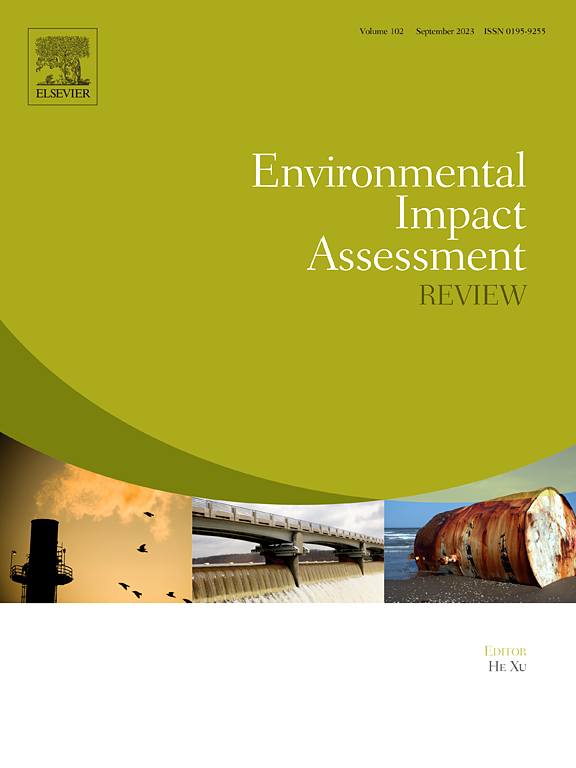自然和人为因素对不同城市尺度夏季热环境的贡献——以成渝城市群为例
IF 9.8
1区 社会学
Q1 ENVIRONMENTAL STUDIES
引用次数: 0
摘要
了解区域热岛对于启动适当的宏观干预措施以缓解和适应气候变化具有重要意义。然而,已经进行了有限的研究来揭示潜在的机制和相关的驱动因素。本研究从宏观(如城市群,UA)、中观(如都市圈,MA)和微观尺度(如市区,UR)分析了成渝地区的RHI特征以及人为和自然因素的贡献,从而弥补了这一空白。该研究证实了成渝地区RHI的显著增长,特别是在中尺度和微观尺度上。其中,宏观尺度显著增加的面积占4%,两个中尺度显著增加的面积分别占7.0%和7.8%。在微观尺度上的比例要高得多。在宏观尺度上,人为因素对RHI形成的贡献大于自然因素,而在所有尺度上RHI的增长都是由人为因素引起的,自然因素主要对RHI的缓解起作用。不透水面密度、人口密度、夜间光照强度、降水量和归一化植被指数是各尺度的主要影响因子。总体而言,本研究从多尺度区域角度探讨了依赖于尺度的RHI和相关驱动因素,并确定了缓解RHI的关键领域。本文章由计算机程序翻译,如有差异,请以英文原文为准。
Contributions of natural and anthropogenic factors to summertime thermal environments across different urban scales: An investigation in Chengdu-Chongqing agglomeration, China
Understanding regional heat islands (RHIs) is important for initiating proper macro-interventions for mitigation and adaptation. However, limited studies have been conducted to reveal the underlying mechanisms and associated drivers. This study addresses this gap by analyzing RHI features and the contributions of anthropogenic and natural factors in the Chengdu-Chongqing area, China, at macro- (e.g., urban agglomeration, UA), meso- (e.g., metropolitan area, MA), and micro-scales (e.g., urban district, UR). This study verified the significant RHI growth in the Chengdu-Chongqing area, especially at the meso- and micro scales. For instance, the significantly increased areas at the macro scale accounted for 4 %, while those at the two meso-scale areas accounted for 7.0 % and 7.8 %, respectively. The proportions at the micro-scale were much higher. Anthropogenic factors contributed more than natural factors to RHI formation at the macro scale, while RHI growth at all scales was due to anthropogenic factors, and natural factors mainly contributed to RHI mitigation. Impervious surface density, population density, nighttime light intensity, precipitation, and the normalized difference vegetation index were the predominant contributors across all scales. Overall, this study explored the scale-dependent RHI and associated drivers from a multi-scale regional perspective and identified the critical areas for RHI mitigation.
求助全文
通过发布文献求助,成功后即可免费获取论文全文。
去求助
来源期刊

Environmental Impact Assessment Review
ENVIRONMENTAL STUDIES-
CiteScore
12.60
自引率
10.10%
发文量
200
审稿时长
33 days
期刊介绍:
Environmental Impact Assessment Review is an interdisciplinary journal that serves a global audience of practitioners, policymakers, and academics involved in assessing the environmental impact of policies, projects, processes, and products. The journal focuses on innovative theory and practice in environmental impact assessment (EIA). Papers are expected to present innovative ideas, be topical, and coherent. The journal emphasizes concepts, methods, techniques, approaches, and systems related to EIA theory and practice.
 求助内容:
求助内容: 应助结果提醒方式:
应助结果提醒方式:


